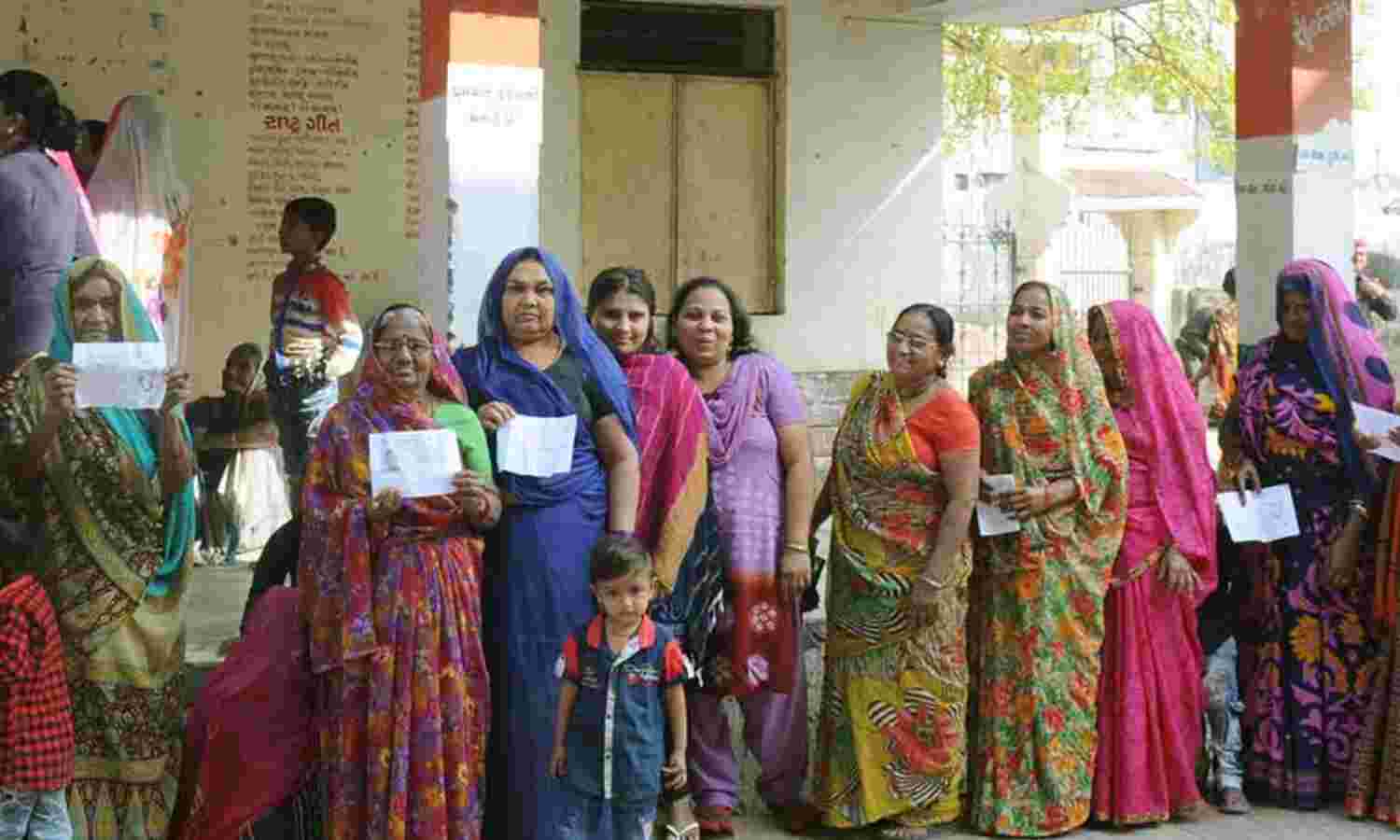Gujarat Assembly Has Fewer Women MLAs In 2017 Than In 2012

The proportion of female members of legislative assembly (MLAs) in Gujarat has fallen to 7% (13 MLAs), two percentage points lesser than 9% (16 MLAs) in the 2012 assembly.
The last time Gujarat assembly had 13 women MLAs was in 2007, according to Election Commission data.
As many as 1,693 (93%) of 1,815 candidates were men and only 122 (7%) were women in the 2017 elections as against 1,569 men (94%) and 97 women (6%) in the 2012 assembly elections.
In the last five elections, the proportion of women candidates has varied between 4-7%.
Source: Association for Democratic Reform
Bharatiya Janata Party (BJP), the winning party in Gujarat, fielded 12 female candidates--6% of its 181 candidates. Of the 12, nine were elected to the assembly, a strike rate of 75%.
Congress, which closely followed BJP in the results, fielded 10 female candidates, 6% of its 176 candidates, and four were elected to the assembly, a strike rate of 40%.
While Bahujan Samaj Party fielded 7% women, Nationalist Congress Party (NCP) fielded 2% women.
With only 13 of the 122 women candidates winning the elections, the strike rate is 10.6%, according to this report by the Association for Democratic Reforms, an advocacy.
Source: Association for Democratic Reforms
In 12 of the 13 constituencies where female candidates won, the closest opponent was a male candidate. Only Bhavnagar East had BJP’s Vibhavari Dave contesting against Congress’s Nitaben Rathod. Dave won by a margin of 22,442 votes.
The highest margin--110,819 votes--was seen in Choryashi where Patel Zankhana Hiteshkumar of the BJP won the seat. The lowest margin was in Kalol where Sumanben Chauhan (BJP) won with a margin of 1,982 votes.
Haryana has highest proportion of women MLAs
The highest female representation in a state assembly is in Haryana, which has 13 women MLAs as part of its 90-member assembly, or 14.4%.
Haryana is followed by Rajasthan with 28 women MLAs (14.1%) in its 199-member assembly.
Nagaland and Mizoram have no women MLAs.
Source: Association for Democratic Reform
Note: As of January 9, 2018
The representation of women members of Parliament (12%) is higher than the national average of women representatives in state assemblies (9%) but still inadequate, IndiaSpend reported on March 8, 2016.
40% panchayats have a woman sarpanch
Of 238,617 gram panchayats (village councils) across the country, 94,583 (40%) have a woman sarpanch (village chief), according to this reply to the Lok Sabha (lower house of Parliament) on November 24, 2017.
Including panchayat members, women account for over 46% of elected representatives of the village councils. The Constitution mandates 33% reservations for women in seats and offices of chairpersons in panchayats.
Elected women sarpanchs have indicated signs of harassment and non-cooperation, as IndiaSpend reported on March 8, 2017.
(Shreya is a data analyst with IndiaSpend.)
We welcome feedback. Please write to respond@indiaspend.org. We reserve the right to edit responses for language and grammar.


